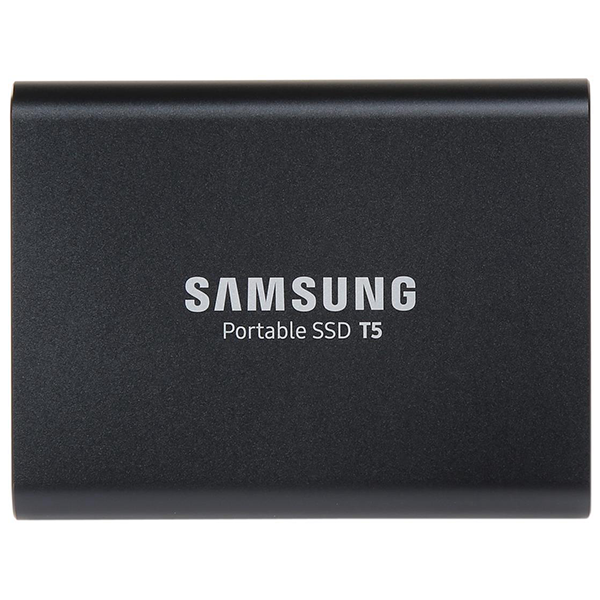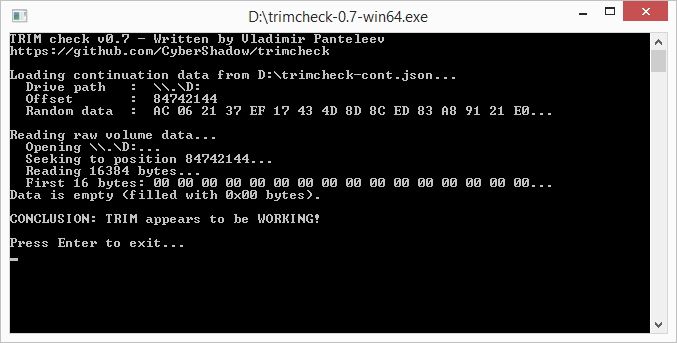Samsung Portable SSD T5 Review
Why you can trust Tom's Hardware
Final Analysis
Samsung just increased production of the new 64-layer V-NAND in June. Samsung's Portable SSD series has been the vessel that brings new NAND technology to market for the last three generations, but it doesn't offer us a chance to compare the NAND technology to older versions. The flash is too fast for the SATA interface, so we will need to wait for an NVMe product to compare 3rd and 4th generation V-NAND.
Before we get too far along, we have an ethical duty to mention that our Portable SSD T5 2TB had a problem, but it didn't die completely. We filled the drive to 100% capacity with a single large transfer to test sustained performance. Performance didn't recover even after we deleted the 2TB test file and let the drive idle for several days. The drive could still read 128KB sequential data at 30 MB/s and write sequential data at 11 MB/s, but it wouldn't recover to full speed. Samsung plans to examine the issue and diagnose the error. Most users don't have a single 2TB file to move to the drive, so I doubt this will be a widespread issue. If I were to guess, it looks like the drive got stuck in a background activity loop that never ended. I'm confident Samsung will fix the condition and release an update.
The Portable SSD T5 builds on the success of the T3, but it doesn't bring enough new features to spur an upgrade if you own the previous-generation T3. If you want to upgrade to increase capacity that's an option but you won't see a large performance increase or a price advantage.
Previous versions of the Samsung Portable SSD did not support TRIM. The new T5 products accept the command from the host through the UASP protocol. The feature doesn’t work with the native exFAT file system that provides compatibility with Android and other devices. You will need to format the Portable SSD T5 with the NTFS file system for TRIM to work. Increased compatibility will be more important for some users, but if you only use Windows, we suggest using NTFS to gain access to the TRIM feature. TRIM will increase performance over time, particularly after heavy use.
We expected the new Portable SSD T5 to come to market with lower prices than the previous generation. That didn't happen this round, and it's disappointing. Samsung does a very good job of giving users of all budgets an option, but it would be nice to see a steady price reduction with each generation. Retailers have the final say when it comes to cost, but we don't expect to see the Portable SSD T5 offered at a discount any time soon. You may be able to find some excellent deals on the remaining stock of T3-branded drives, though.
The T5 has two standout features. The ability to use the T5 with an Android cell phone or tablet is a welcome addition, while the encryption feature is a close second for business users or anyone who wants to secure their data. Losing a portable SSD can be an expensive lesson, but losing the data extends beyond just the financial loss. Even though it's small and you will need to initiate simultaneous file transfers to see it, the performance increase is also a nice addition.
Samsung just didn't reach high enough with the Portable SSD T5 to make it an amazing product. The product fits with user's needs today, but we would have liked to see a Thunderbolt 3 / USB 3.1 Gen 2 combo. Over the last two years, Thunderbolt has gained traction in desktop and notebook systems. Later this year, Intel will bring native Thunderbolt 3 to the CPU, so every new computer will support the technology. We know other companies will have portable storage products with this technology before the end of the year. Samsung missed an opportunity to lead and set a new standard rather than just going with the flow.
Get Tom's Hardware's best news and in-depth reviews, straight to your inbox.
MORE: Best SSDs
MORE: How We Test HDDs And SSDs
MORE: All SSD Content

Chris Ramseyer was a senior contributing editor for Tom's Hardware. He tested and reviewed consumer storage.
-
TomHaX Is it possible to use Samsung Portable SSD T5 to boot Mac and work from it all-day-long?Reply -
Eximo I suppose you are paying for the enclosure and the interface at $200, but at $800, I would go out and buy an mx300 and a nice enclosure for around $600.Reply -
Xajel @Tech2020, When you buy more storage price per GB should go lower...Reply
Regardless of that, I really loved WD My Passport SSD design much better, not to mention it is smaller and also it uses standard M.2 form factor inside which is the newer standard that should replace mSATA. -
Eximo I'm not saying I need an external SSD, just something I would try, and I would go for an expensive enclosure to protect that much SSD. Maybe something from Lacie. I would certainly sit down and do research first.Reply
I let my office provide all my 'work' equipment (which these days amounts to a basic business class laptop, everything is in the cloud now or a least remote...). At home it is just a gaming build. -
jn77 This is rather upsetting. So the T3 is old and 2TB is still that expensive. I don't believe it for a minute.Reply
The other issue is that my laptop does not have an M.2 port, but it has an mSATA port and I have been looking to upgrade my 1TB mSATA to a 2 or 4TB model (Which technically don't exist)(Bull S*)
Why won't they release the 2TB mSATA in the T3 or the T5 as a standalone mSATA product so I can put a 2TB mSATA in my laptop for a reasonable price.... Like less than $400.

